Oasis Terraces社区中心和医院,新加坡 /
思锐建筑事务所与Multiply Architects合作完成了位于新加坡的Oasis Terraces社区中心和医院的设计。
Serie Architects working in collaboration with Multiply Architects has completed Oasis Terraces, the new Punggol Neighbourhood Centre and Polyclinic in Singapore.
▼鸟瞰图,aerial view ©Hufton + Crow

▼Oasis Terraces社区中心和医院旨在为其所在的社区提供服务,Oasis Terraces is a new generation of community centres to serve its public housing neighbourhoods ©Hufton + Crow

Oasis Terraces(绿洲平台)是由新加坡住房和发展委员会开发的新型社区中心,旨在为其所在的社区提供服务,包括公共设施、购物商场、便利设施和政府综合医院。设计引入了一个连续的花园平台,并使其呈阶梯状向水岸延伸。这些被绿植覆盖的花园可以被用作重要的公共活动空间,也可以成为儿童游乐场和天然的剧场舞台。
Oasis Terrace is a new generation of community centres developed by Singapore’s Housing and Development Board to serve its public housing neighbourhoods. It comprises communal facilities, shopping, amenities and a government polyclinic. Serie Architects’ design utilises a series of lush garden terraces that slope towards the waterway as one of the key elements to generate communal activities. These lush gardens act as communal spaces, children’s playgrounds and a natural amphitheatre.
▼连续的花园平台呈阶梯状向水岸延伸,a series of lush garden terraces slope towards the waterway ©Hufton + Crow

▼建筑外观,exterior view ©Hufton + Crow
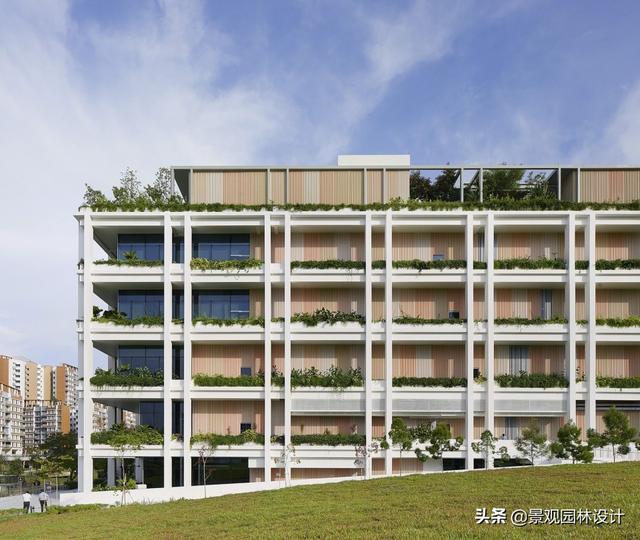
▼建筑的每个立面都充斥着绿植,every visible elevation of the building is covered with lush plating ©Hufton + Crow

屋顶同样覆盖以茂密的植被,包括用于城市农业的种植床。这些花园不仅能够为社区带来更加优美的景观,同时也能够促进集体性的园艺活动,通过种植和维护花园来建立更加牢固的社区纽带。
The roof is also heavily landscaped and features planting beds for urban farming. The gardens play more than just an aesthetic role in the community; they are a collective horticultural project. By bringing residents together to plant, maintain and enjoy them, the gardens help nourish community bonds.
▼屋顶花园,roof garden ©Hufton + Crow
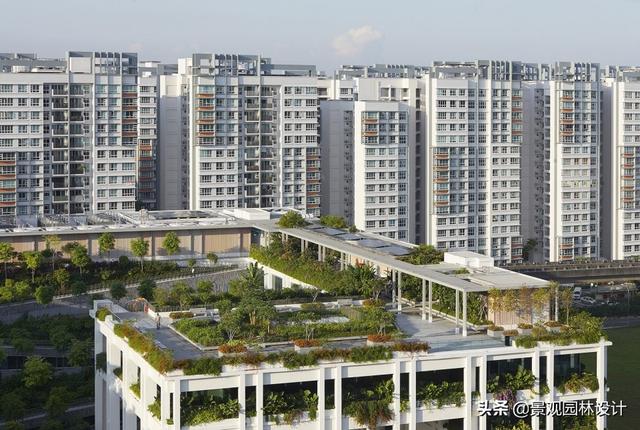
▼景观细部,landscape detailed view ©Hufton + Crow

©Hufton + Crow

餐厅、教学中心和综合医院等空间共同俯瞰着公共花园,并且直接与花园平台相连。人们可以直接在户外花园中用餐。综合医院的等候区也同样享有花园平台和水岸的优美视野。
Overlooking the communal gardens on platforms are rooms and outdoor areas for communal dining, restaurants, education centres, and polyclinic services. These spaces are directly connected to the terraced garden, allowing dining activities to spill out into these areas. Likewise, the waiting areas of the polyclinic enjoy views of the garden terraces and waterways.
▼俯瞰公共花园,aerial view to the communal gardens ©Hufton + Crow

朝向水岸的风雨广场是社区中充满活力的核心地带,可以用于各种类型的社区活动和事件。广场连接了贯穿场地的东西向和南北向道路,同时与附近的Oasis轻轨站相连接,从而成为社区中重要的交通节点。
A large sheltered plaza fronting the waterways creates the vibrant heart for the community. This plaza will be used for a wide range of communal activities and events and sits at the crossing point of the east-west and north-south thoroughfares of the site. All circulation through the site and from the adjacent Oasis LRT station culminates at the plaza.
▼风雨广场,the sheltered plaza ©Hufton + Crow


建筑的每个立面都充斥着绿植,与环绕在餐厅和医院外部的凉廊共同在室内和室外之间形成一层“滤网”,使阳光和自然风柔和地透入内部空间,从而让整个建筑呈现出一种轻盈而开放的感觉。
Every visible elevation of the building is covered with lush plating. Together with the veranda spaces that wrap around the restaurants and polyclinic, the plants act as an environmental filter between the exterior and interior spaces. The architecture is also characterised by a sense of lightness and openness allowing daylight and breezes to permeate the building, promoting the use of natural ventilation.
▼从水岸望向建筑,view from the waterway ©Hufton + Crow

▼轻盈而开放的立面,a light, open facade system ©Hufton + Crow

思锐建筑事务所的主创建筑师Christopher Lee表示:“我们的设计借鉴了新加坡住房和发展委员会在上世纪70-80年代开发的住宅建筑中常见的开放式框架,并基于景观环境将这种框架转变为一个更加轻盈和开放的、能够捕捉和容纳各类社区功能的系统——这是一座为社区生活的展开而打造的建筑。”
Christopher Lee, Principal of Serie Architects: ‘Our design is informed by the open frames commonly found in the facades and corridors of HDB’s housing blocks of the 70s and 80s. We’ve transformed this precedent into a light and open frame that captures and accommodates diverse programmes for the community in a landscape setting — it is an architectural framework for communal life to unfold’.
▼平面图,floor plans

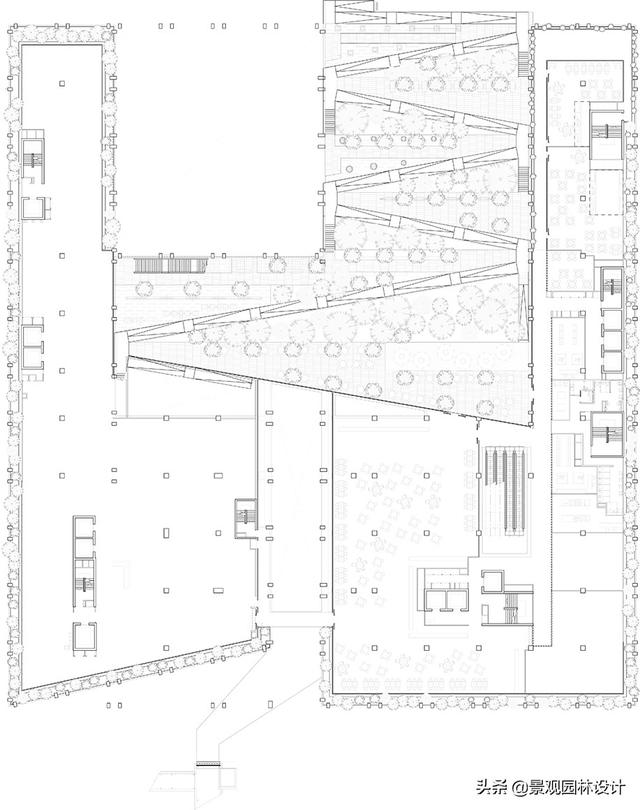
▼剖面图,section




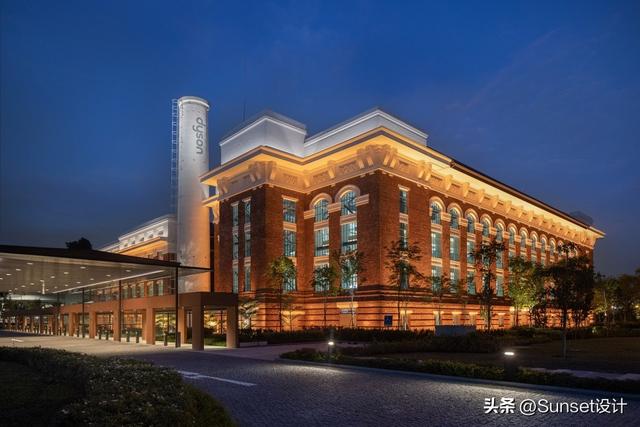

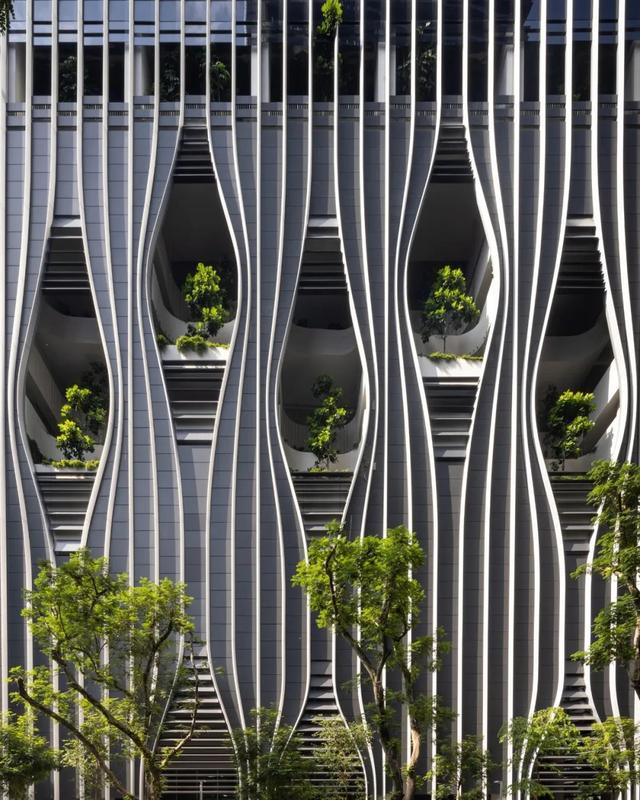





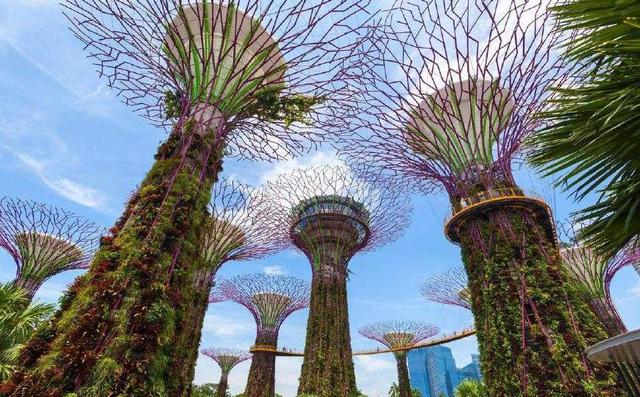










评论